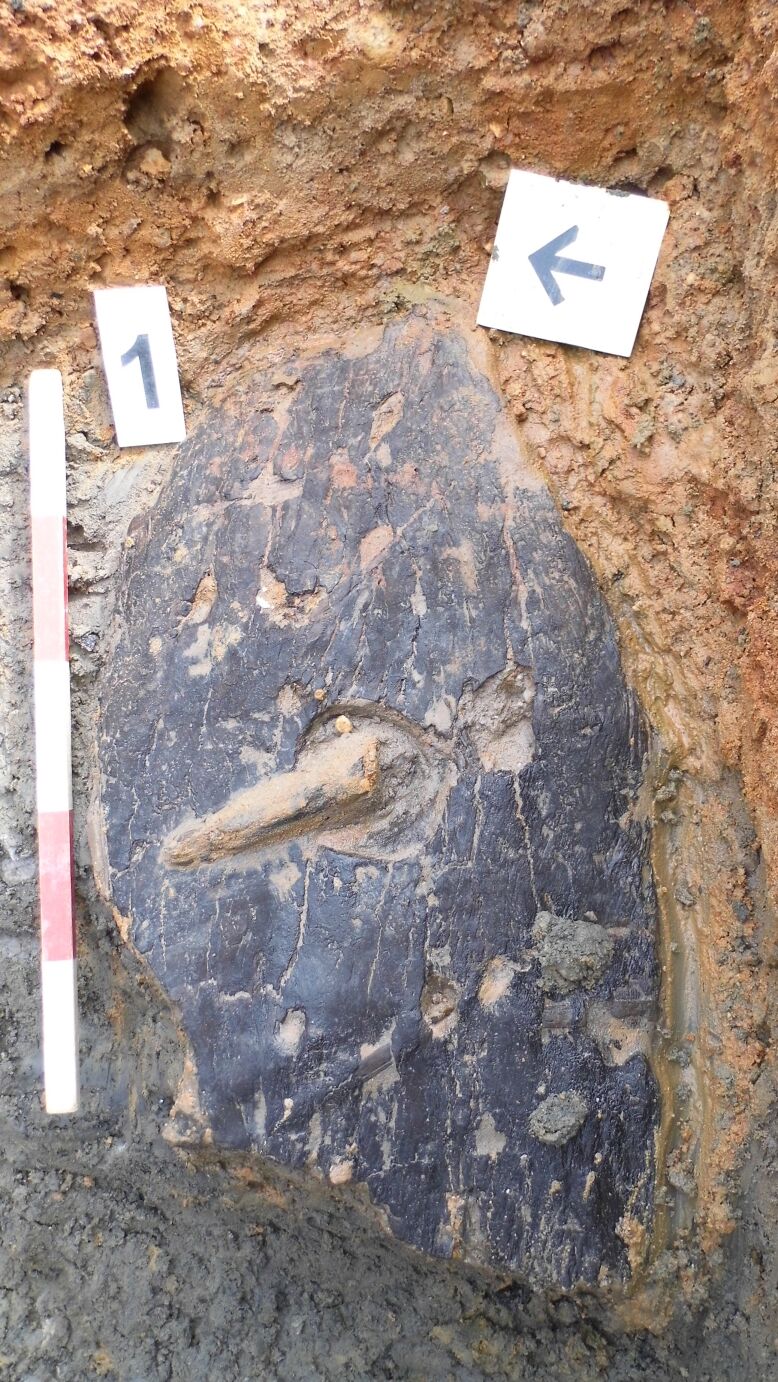Archaeologists Discover the First Ever Iron-Age Shield Made of Bark in England


Archaeologists discovered an Iron Age bark shield near Enderby, a town southwest of the city of Leicester in the United Kingdom.
Though archaeologists knew that people from this period made bark bowls and boxes, this is the first evidence that Iron Age people used the seemingly fragile material for a shield, according to statement released by the University of Leicester Archaeological Services.
Radiocarbon dating suggested the shield was made sometime between 395 and 255 B.C., which dates it to the middle of the Iron Age. It was crafted from either alder, willow, poplar, hazel or spindle bark and stiffened to withstand pressure with strips of either apple, pear, quince or hawthorn wood. It also had a woven boss, or a round piece of material that shields against blows, that protected its handle. The outside of the shield sported a checkerboard pattern in red mineral paint. [In Photos: Boneyard of Iron Age Warriors]
The archaeologists discovered the shield on farmland in 2015, in a watering hole that was used by Iron Age and Roman communities. It's not clear why the shield was at the bottom of a pit. Researchers think it was either broken and thrown away or placed there as part of a ritual, according to the University of Leicester.
The shield was very damaged and the researchers are now trying to figure out how it was damaged — was it pierced by spears during battle or something else entirely?
Radiocarbon dating suggests that the shield was used for about a decade before being thrown in the hole.
Though it's unusual that this bark shield survived to this day, it was probably not one of a kind, but was probably a common type of shield at the time, according to the statement.
Get the world’s most fascinating discoveries delivered straight to your inbox.
Last year, the researchers conducted an experiment to re-create bark shields, and found that they would be tough enough to withstand stabs from blades and arrows. Though bark isn't as strong as solid wood or metal, it's lighter, allowing a fighter to be quicker and more mobile, according to the statement.
- Photos: Gladiators of the Roman Empire
- Photos: Gold, Amber and Bronze Treasures Found in Iron Age Grave
- Photos: Oldest Iron Objects Came from Outer Space
Originally published on Live Science.

Yasemin is a staff writer at Live Science, covering health, neuroscience and biology. Her work has appeared in Scientific American, Science and the San Jose Mercury News. She has a bachelor's degree in biomedical engineering from the University of Connecticut and a graduate certificate in science communication from the University of California, Santa Cruz.



